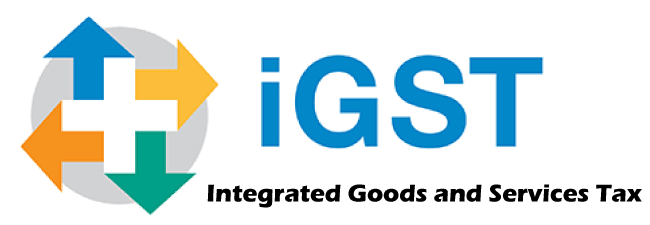Full Form of IGST
IGST Full Form: IGST means Integrated Goods and Services Tax. It is one of the three components (CGST, SGST, and IGST) of GST (Goods and Services tax). IGST is charged on interstate trade (purchase or supplies) of goods as well as import of services and goods. It means when a goods purchased and supplied from one state to another like, if a trader of Haryana sells goods to a trader of Rajasthan, IGST is levied on the goods. In the same way when goods are imported in India from other countries, Integrated Goods and Services is levied. The IGST act was implemented on 1st July 2017 under the concept of one tax one nation, and it is applicable to all over India, including Jammu and Kashmir.

Further, IGST is collected by the central government, and the government shares it with the state government. In the case of interest on tax amounts, the state government does compromise with the central government. Hence IGST is a combination of (CGST) central government’s share and (SGST) state’s government share of tax.
If we go into the history of tax, it was started in 1986 by finance minister Vishwanath Pratap Singh in Rajiv Gandhi’s government with (MODVAT) modified value added tax. Further, in 1999 during the regime of Prime Minister Atal Bihari Vajpayee GST “Goods and Services Tax” was proposed. After a period of time on 22 march 2011, the UPA Government introduced the 115th constituent amendment bill in Lok Sabha to bring about the GST. But due to the objection of Gujarat chief minister Narendra Modi in October 2013 the bill was postponed for an uncertain period. And finally the bill was passed by Lok Sabha on 29 March 2017, as well as passed by the Rajya Sabha on 6 April 2017. With GST other bills were CGST (Central Goods and Services Tax), IGST (Integrated Goods and Service Tax), UTGST (union territory goods and services) and others. After these bills state legislatures of different states have passed SGST (State Goods and Services Tax). Thereafter, at midnight on 1st July 2017, GST with all other bills were launched by the then President of India and the Government of India. The rates of GST have been modified several times after its launching, as the latest modification was on 22 December 2018, in which 28 goods and 53 services were revised.
Now, the question is, how does IGST work. We will understand it through the given example:
Ajay, a trader of Rajasthan has to sell almonds to Rahul in Haryana. The cost of the Almond is RS 20,000. Now, if the tax rate of Almonds is 20%, then 20% of 20,000 is 4000, the price of Almonds will become 24, 000, and that price Rahul will pay to Ajay. Thereafter, since the trading is interstate trading, Ajay will pay IGST to the central government. Now the central government will share it with the state government as per tax rate decided by the authorities.
Further, some salient features of IGST are:
- IGST is applied on both interstate trading as well as import of goods and services.
- States also get their share in IGST by the central government.
- IGST came into existence by the 101st amendment of the constitution of India, according to the new article as Article269A.
- It is implemented under the concept of one tax one nation.